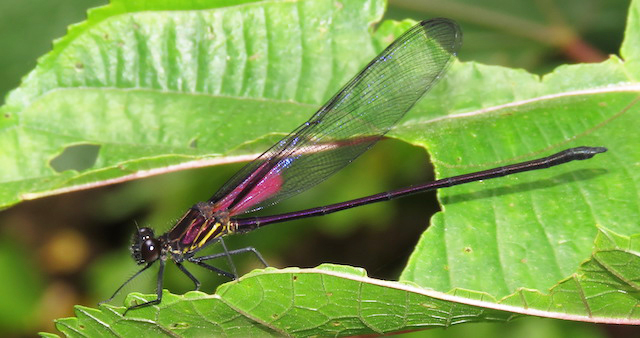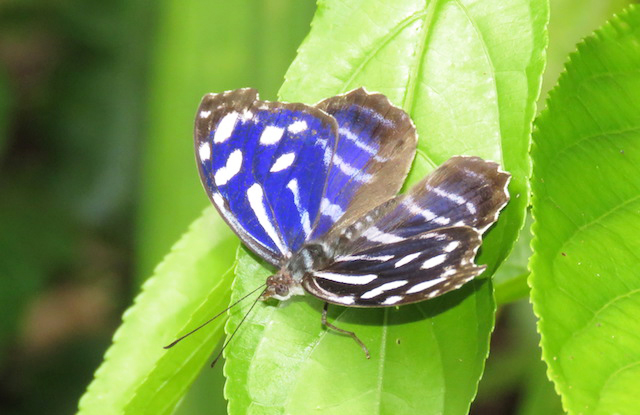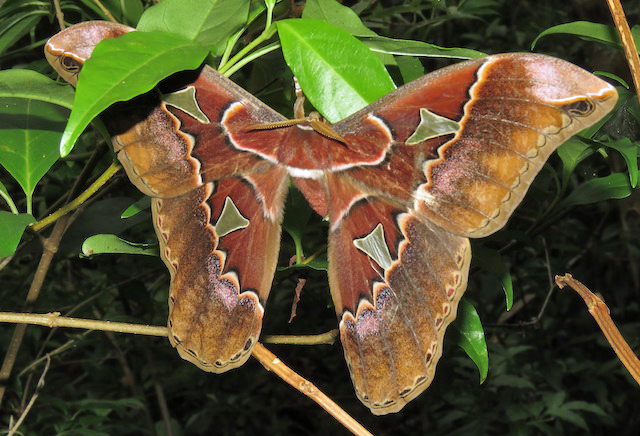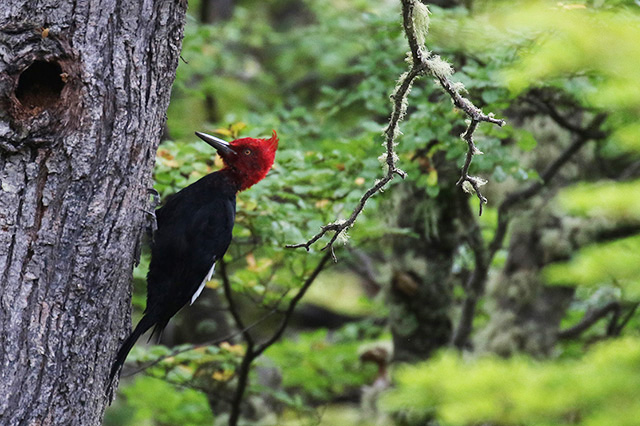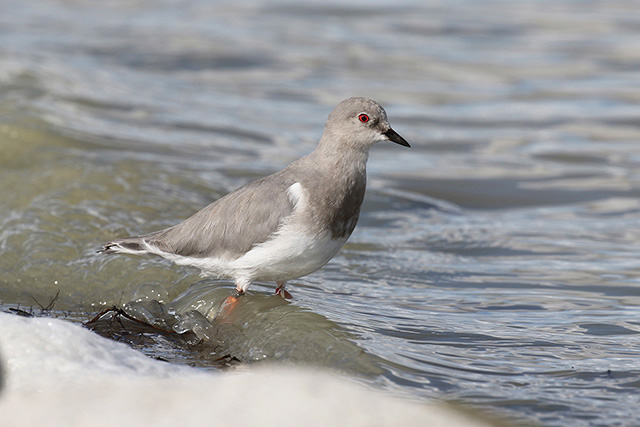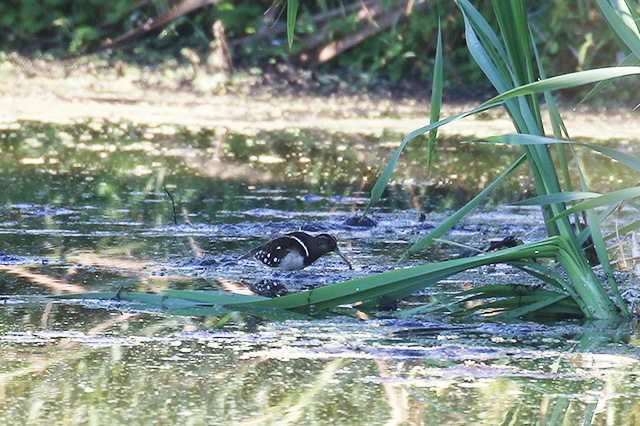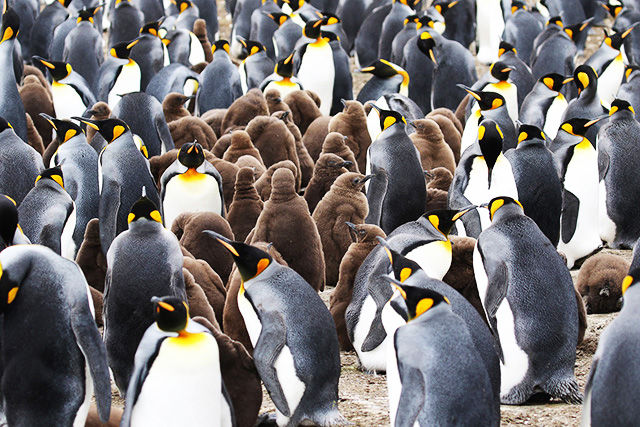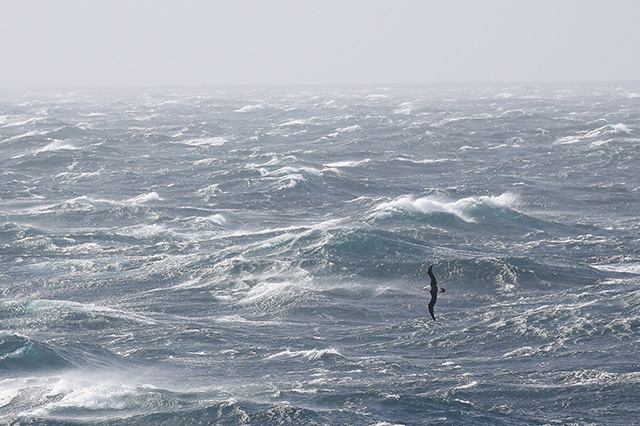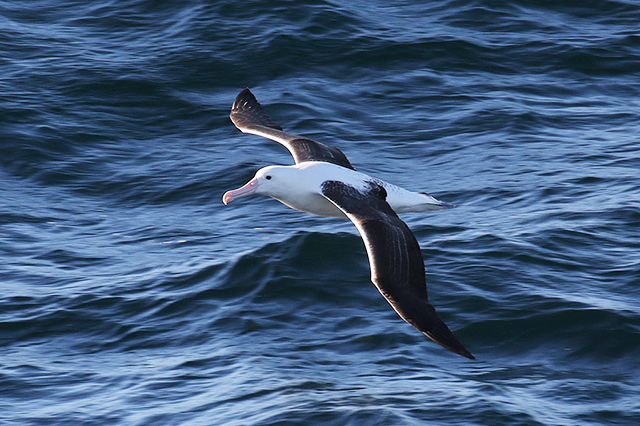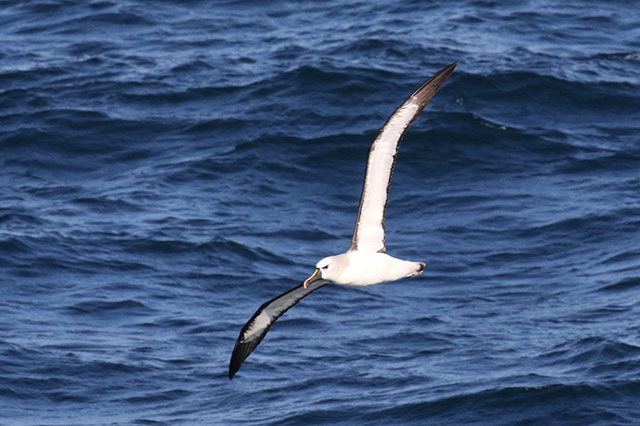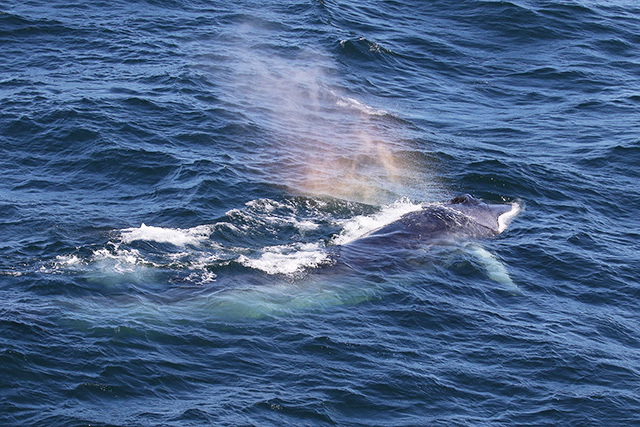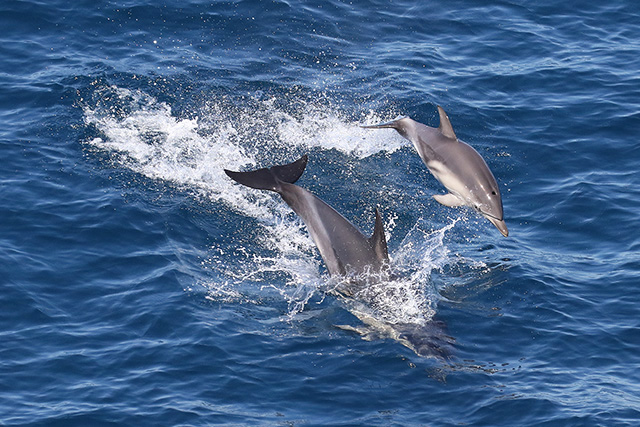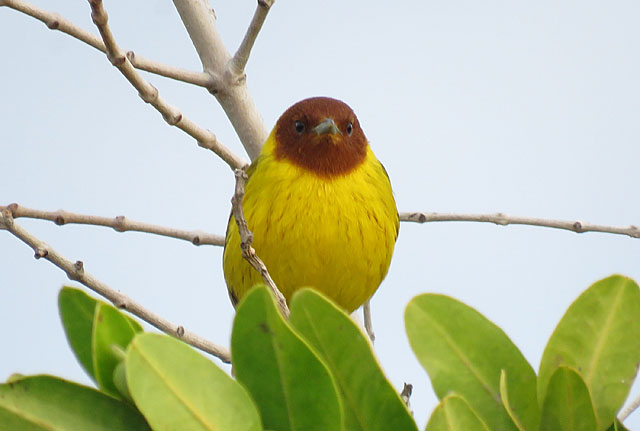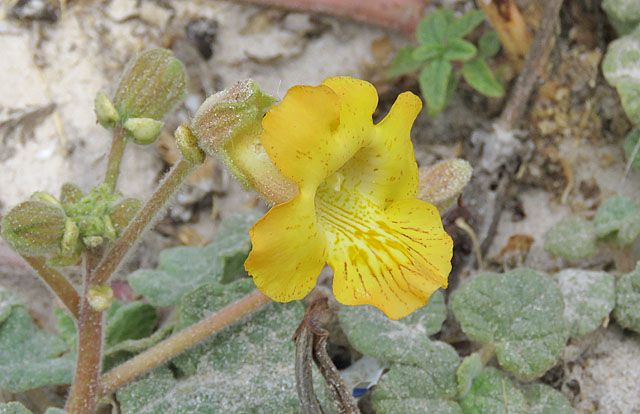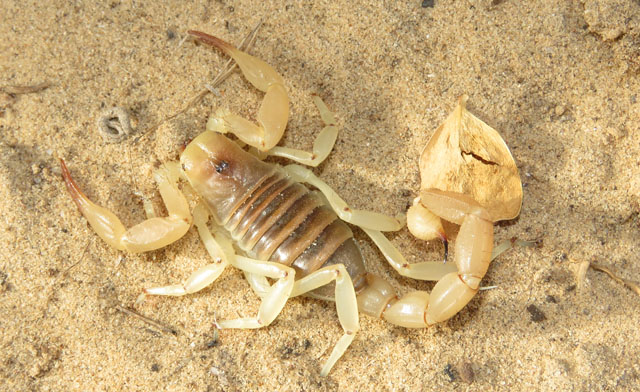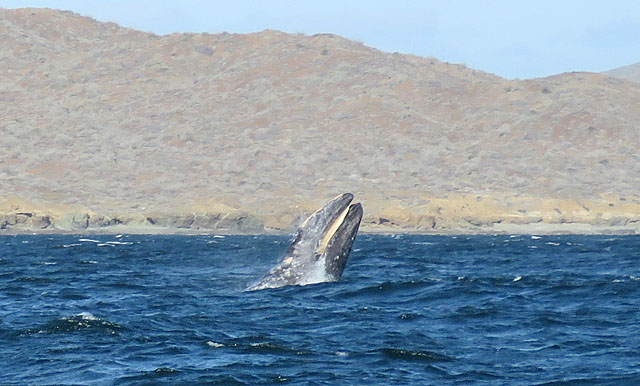From the Field
July 10:
Gavin Bieber on his and Jake Mohlmann's recently completed tour, Alaska Majesty
Our Alaska Majesty tour found everywhere below average temperatures and a lingering sense of a wintery spring. Despite the chill, or perhaps because of it, the trip was wonderfully mosquito free, and we experienced sunny conditions nearly throughout. This year we started around Nome which was, as ever, amazing. Here we enjoyed point blank views of birds like Rock Ptarmigan, American Golden-Plover, Arctic Warbler, and the dazzling Bluethroat (still in its active song flight courtship stage) as well as a surprise in the form of a nesting pair of White Wagtails out on the Teller Road.
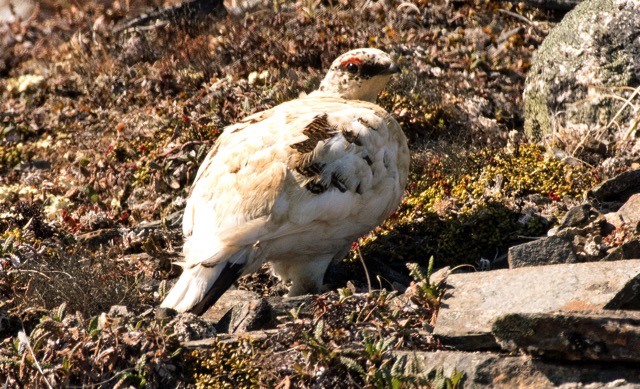
Rock Ptarmigan - Image: P.Baum
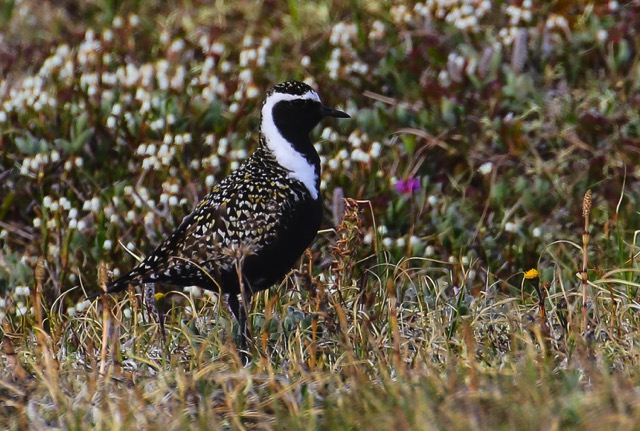
American Golden-Plover - Image: J. Hopkins
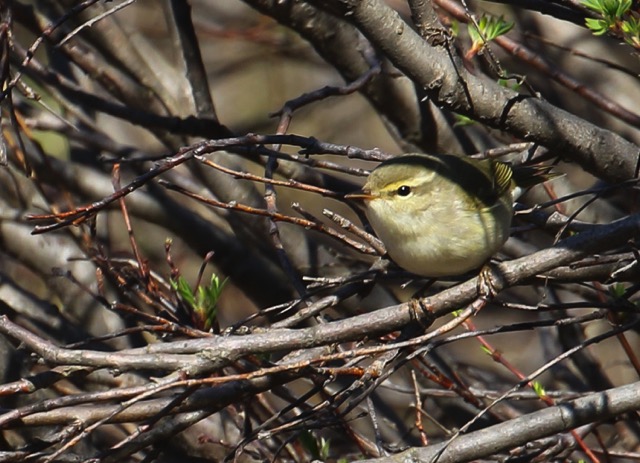
Arctic Warbler - Image: J. Hopkins
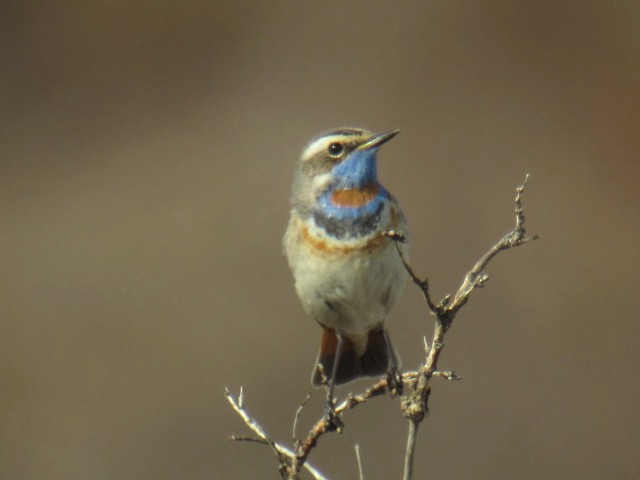
Bluethroat - Image: G. Bieber
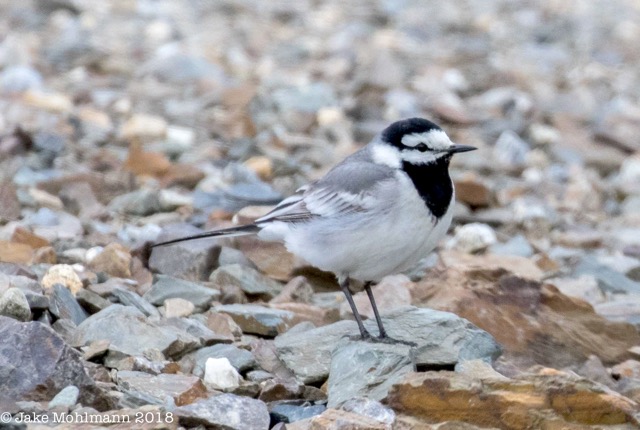
White Wagtail - Image: J. Mohlmann
We then moved inland, traveling through the extraordinarily scenic Alaska range and the Denali region. Here we found Smith’s Longspurs on territory, a nesting pair of Northern Hawk Owls perched atop some roadside spruce trees and a strutting Spruce Grouse that scuttled off the road at our approach.
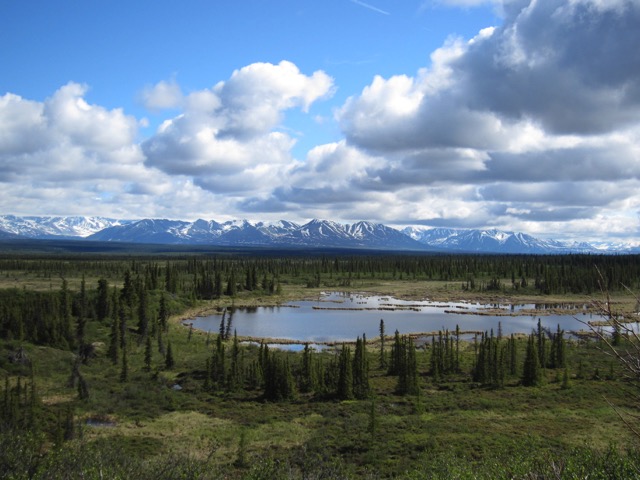
View from the Denali Highway - Image: G. Bieber
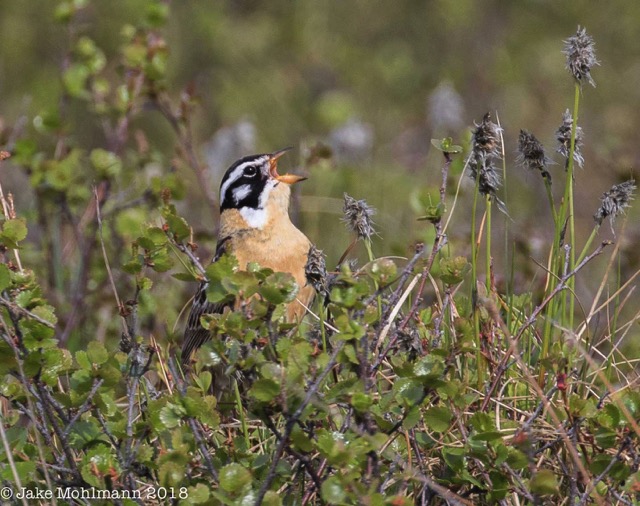
Smith's Longspur - Image: J. Mohlmann
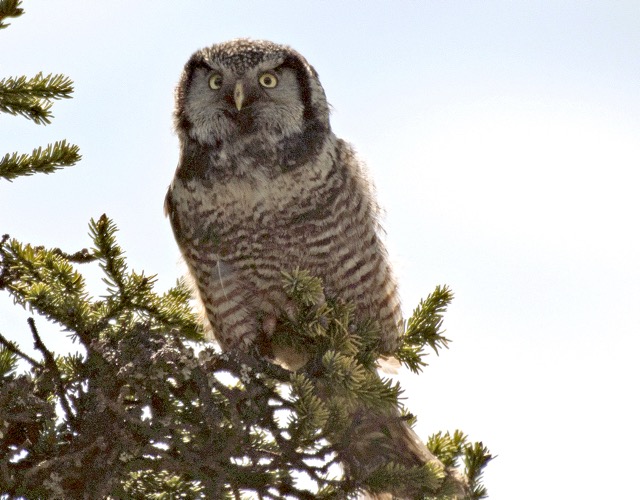
Northern Hawk-Owl - Image: P. Baum
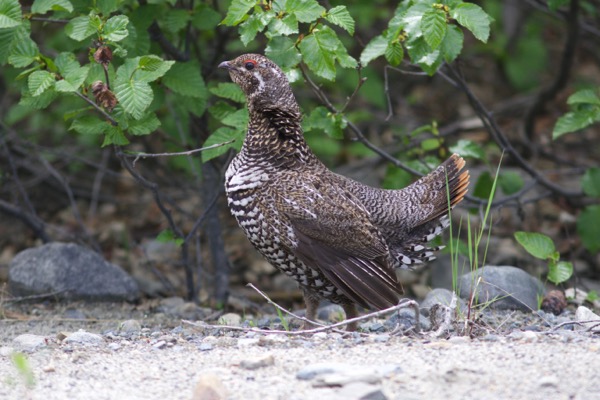
Spruce Grouse - Image: J. Mohlmann
Our final area for the main tour was Seward, where we found the beautiful Resurrection Bay under full sun, with Humpback and Fin Whales, Orca and tame Bald Eagles really putting on a show. The towering forests here were filled with the song of Townsend’s Warblers, here at nearly the northern limit of their range.
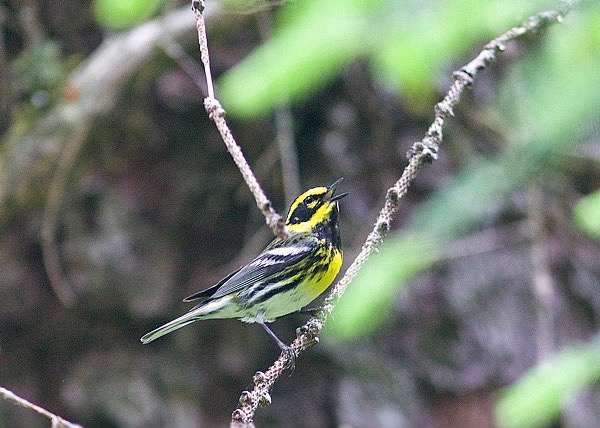
Townsend's Warbler - Image: J. Mohlmann
Our tour extensions were both incredible. Although we had to negotiate some transportation complications for the Pribilofs we managed to fly in and out on the appropriate days, and enjoyed a spell of reasonable weather while on the island. The local breeders like Red-legged Kittiwake, Red-faced Cormorant, Rock Sandpiper and Crested Auklet all posed nicely for our cameras this year. And in addition to these expected species, and a fine assortment of mammals including Northern Fur Seal and Arctic Fox we tracked down some nice rarities such as Terek Sandpiper, Oriental Cuckoo and Tufted Duck.
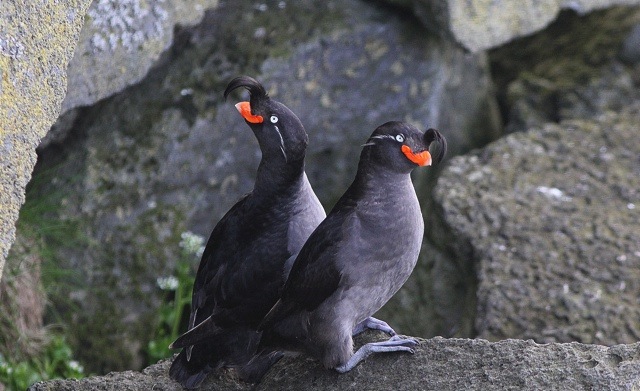
Crested Auklet - Image: G. Bieber
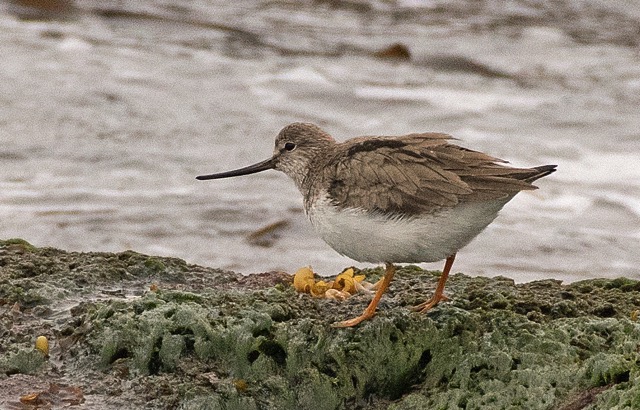
Terek Sandpiper - Image: P. Baum
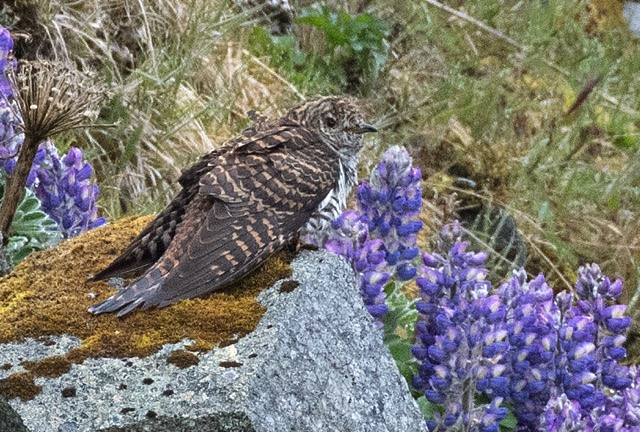
Oriental Cuckoo - Image: P. Baum.
On our post tour extension to Barrow we arrived to find much of the tundra still firmly locked in winter, although with temperatures in the low 50’s and bright sun our whole visit the snowbanks were melting rapidly. This year’s trip was perhaps our best ever, as over parts of three days we reveled in close up views of the expected birds here including Snowy Owl, Steller’s and Spectacled Eiders and a host of shorebirds on their breeding grounds.
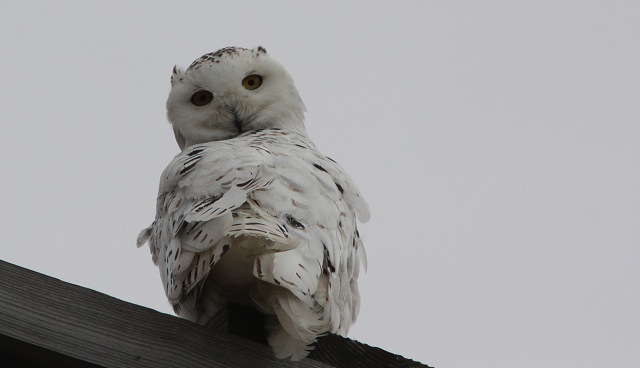
Snowy Owl - Image: G Bieber
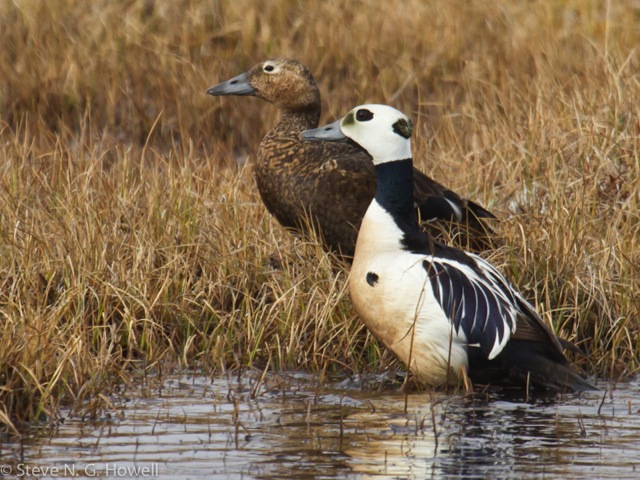
Steller's Eider - Image: Steve Howell
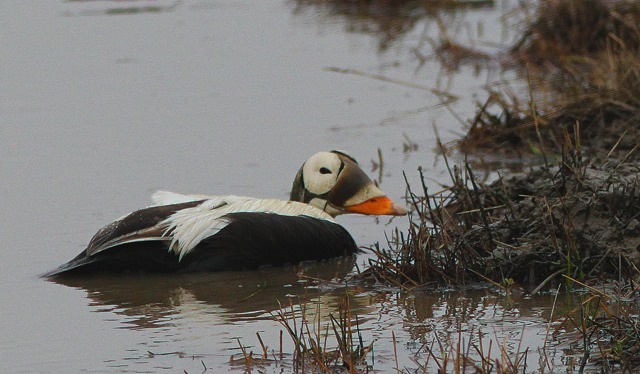
Spectacled Eider - Image: G Bieber
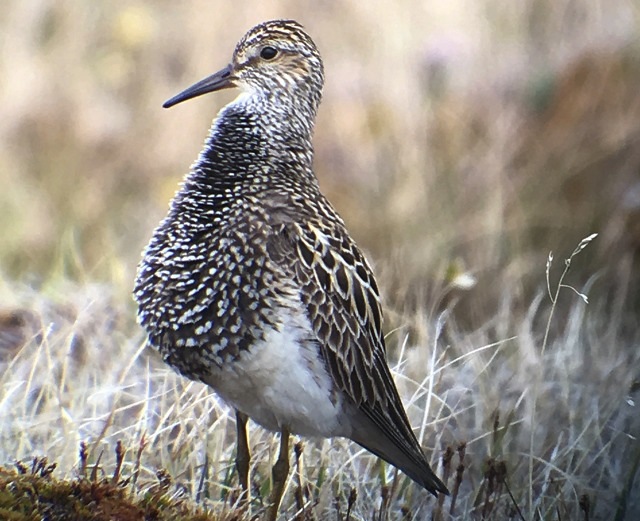
Pectoral Sandpiper - Image: G Bieber
Here too were elegant Sabine’s Gulls courting, a vagrant Gray-tailed Tattler that allowed us close approach, and perhaps the birds of the trip; a trio of blushing pink Ross’s Gulls that showed well for us on both days of our visit, marking the first time in 15 years that we have recorded this amazing species on our Alaska Majesty tour.
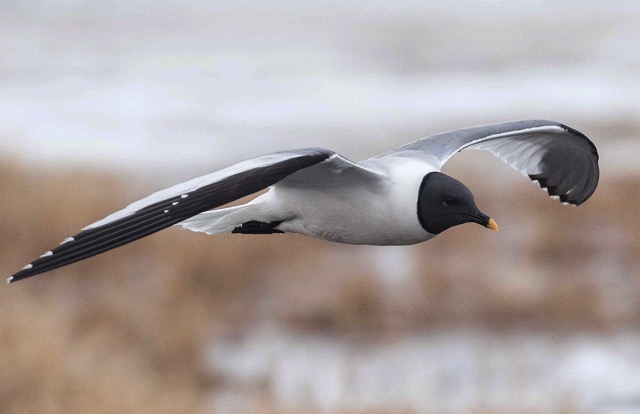
Sabine's Gull - Image: J Mohlmann
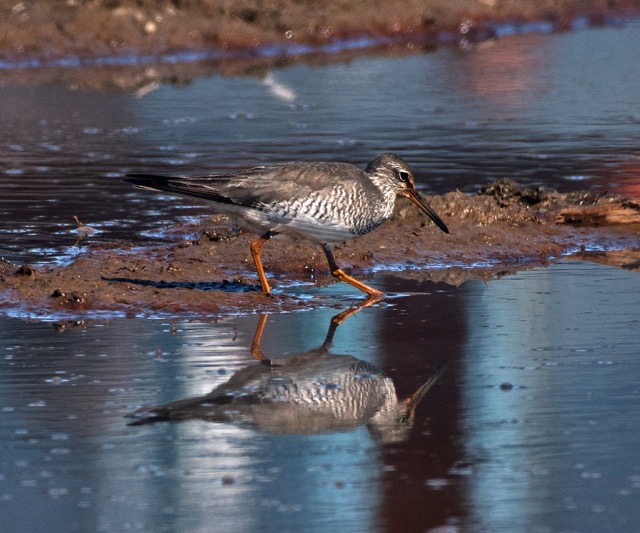
Gray-tailed Tattler - Image: P. Baum
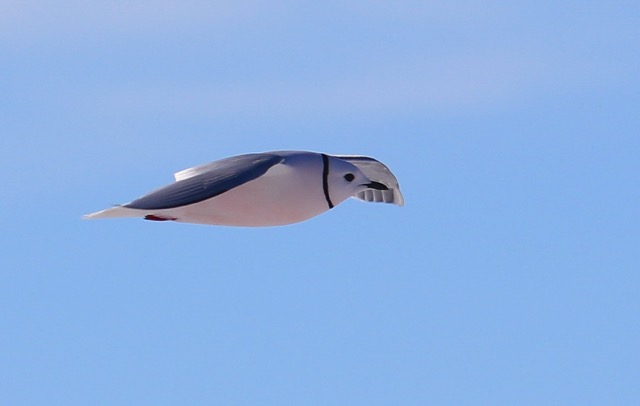
Ross's Gull - Image: J Hopkins
In all we tallied about 170 species on the main tour, and 192 including the extensions to Saint Paul Island and Barrow. The variety and abundance of birdlife, the great wildlife, and the extraordinary natural beauty make Alaska Majesty one of the best birding tours anywhere.
June 26:
Luke Seitz on his recently completed tour to Guatemala
Our first Guatemala tour in a number of years had wonderful experiences with a number of regional specialties alongside abundant Neotropical migrants. The trip started off with a bang, finding beautiful Pink-headed Warblers on just day two – like a strawberry dusted with snow, dipped in a fine Pinot Noir…

From the edge of the mixed pine-oak forests where the Pink-headeds reside, along with a long list of other fine birds including Blue-throated Motmot, Hooded Grosbeak, and Blue-and-white Mockingbird…

…we journeyed to the high volcanic peaks around Lake Atitlán, where a difficult hike provided Horned Guan for some, and outstanding views of Lesser Roadrunner.

The main tour ended with eye-melting views of the dazzling Garnet-throated Hummingbird; we soaked up at least ten individuals feeding unconcernedly in front of us for over an hour...

...in lush cloud forest, home to not only the Garnet-throateds but also Unicolored Jays, and many others!

The Tikal extension was excellent. Ocellated Turkeys such as this displaying male were easy to see around the entrance, and we were treated as well to stunning views of Royal Flycatcher with its crest fully raised (!!!), a hulking Black-and-white Owl, Orange-breasted Falcon, Black-throated Shrike-Tanager, and tons more…

…all set in a backdrop of incredible Mayan temples. Needless to say, this small Central American country has a lot to offer the birder –already looking forward to returning next year!

June 4:
Gavin Bieber on his recently completed tour, Arizona: Owls and Warblers
Our trip coincided with the first hot week of the year, with temperatures hovering a few degrees above average and many migrant birds quickly heading north for more pleasant climes and their respective nesting territories. Despite the low numbers of migrants it was a fine week, tallying an impressive 211 species. Our avian highlights were many: residents such as an inquisitive Whiskered Screech Owl peering down from its roost site in a roadside sycamore, a Five-striped Sparrow lurking in California Gulch, or the incomparable Montezuma Quails spotted in Ash Canyon were just some examples.
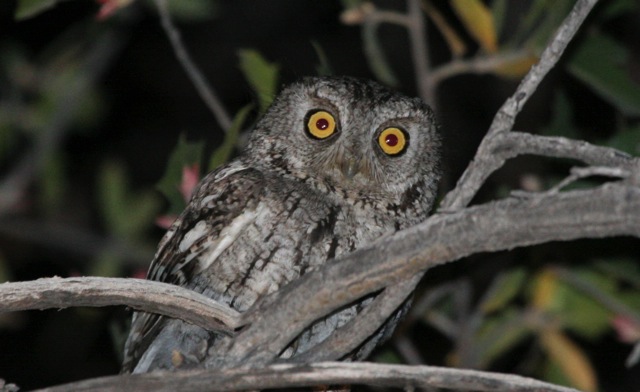
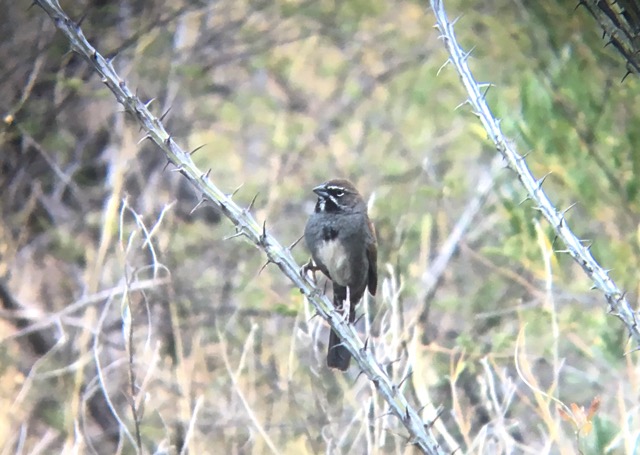
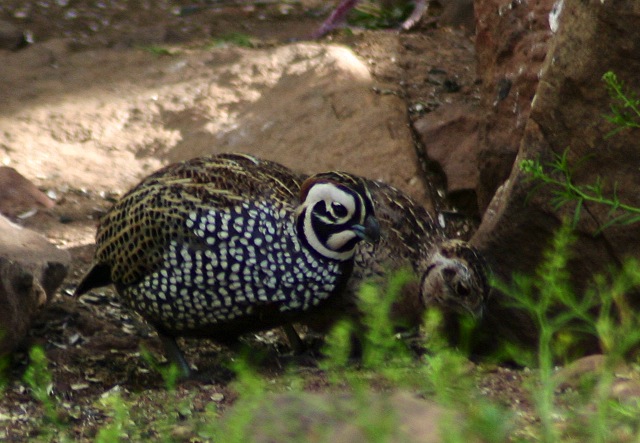
Summer breeders such as dazzling Red-faced Warblers and handsome Blue-throated Hummingbirds were busy setting up their territories, and not all the wintering birds had departed as we were treated to views of a lingering Lewis’s Woodpecker, and a female Williamson’s Sapsucker, and several wandering Red Crossbills.
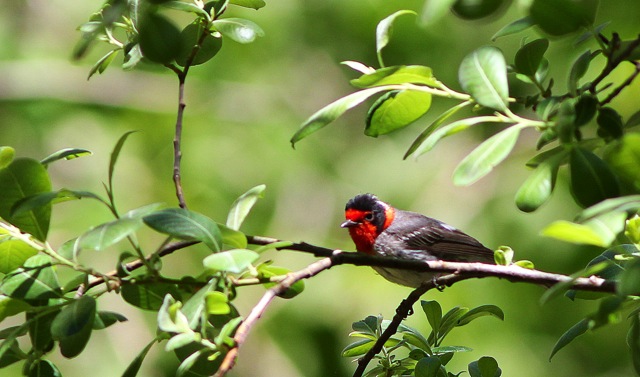
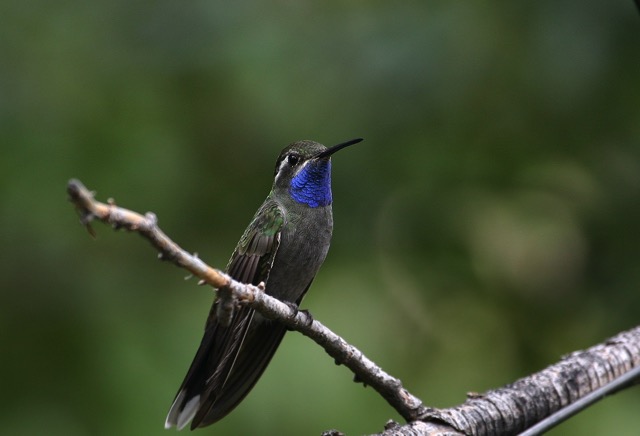

This was an excellent year for 'Mexican' species, and we found nesting Rose-throated Becards and bathing Rufous-backed Robins along the Santa Cruz River, and a very cooperative Slate-throated Redstart in the beautifully scenic Chiricahua Mountains.
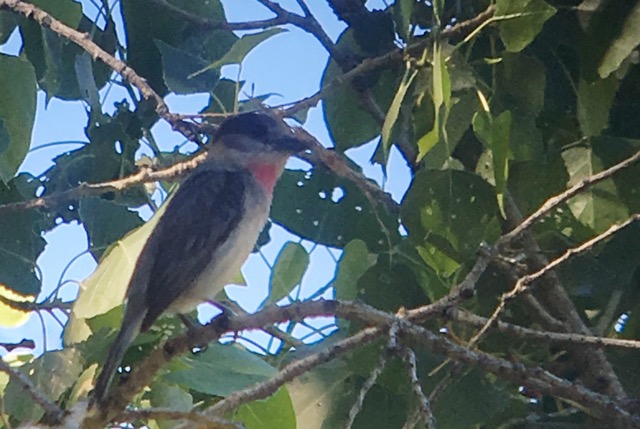
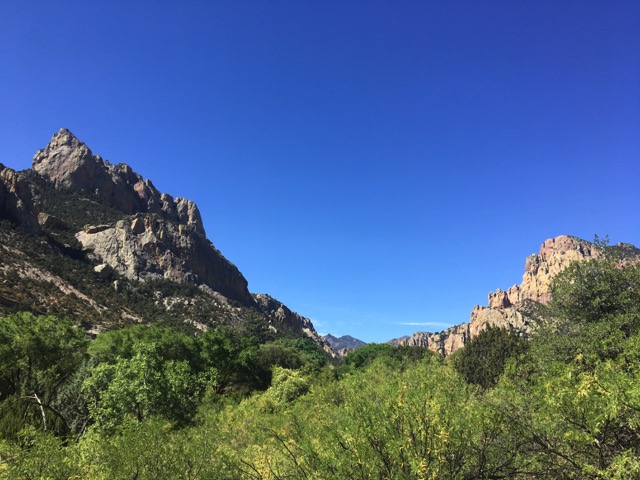
When you can combine a wide array of spectacular birds with a nice supporting cast of mammals and butterflies, all in wonderful desertscapes, it's hard not to have a truly excellent tour!
May 8:
Gavin Bieber on his and Evan Obercian's recently completed tour, Florida: The South, the Keys and the Dry Tortugas
We just wrapped up a fun week exploring south Florida from Fort Myers to Key West. We started with a day in the dry pine forests and upland scrub of the central peninsula with fantastic views of an inquisitive Barred Owl, and a cooperative Florida Scrub Jay.
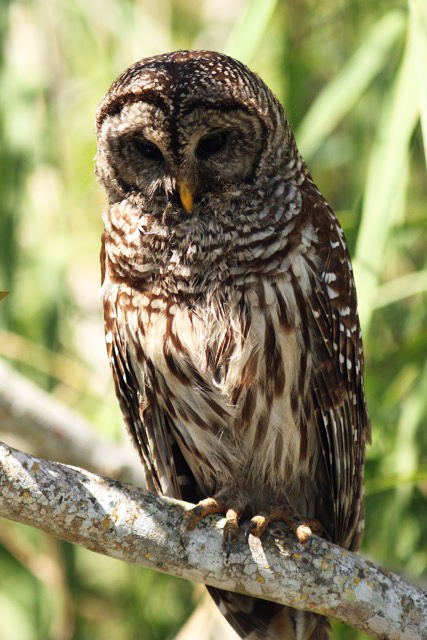
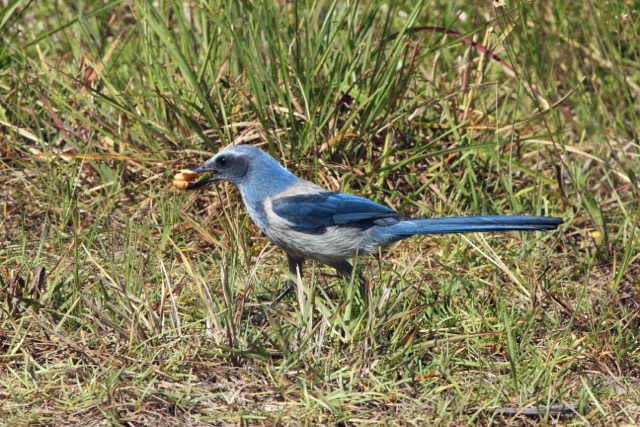
A day trip out to the unique Fort Jefferson in the Dry Tortugas was sunny and hot but still produced the usual cloud of nesting seabirds, 16 species of warblers and a much appreciated Black Noddy.
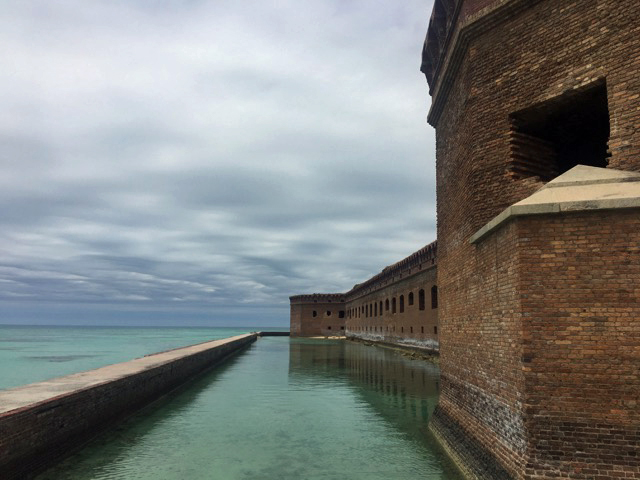
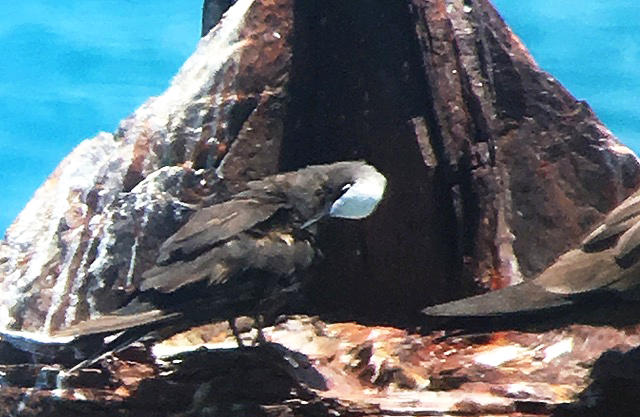
Some of Florida’s most sought-after birds, like Mangrove Cuckoo and Limpkin, posed for us nicely and we even lucked into front row seating for a mating pair of Purple Gallinules in a marsh near Sarasota.
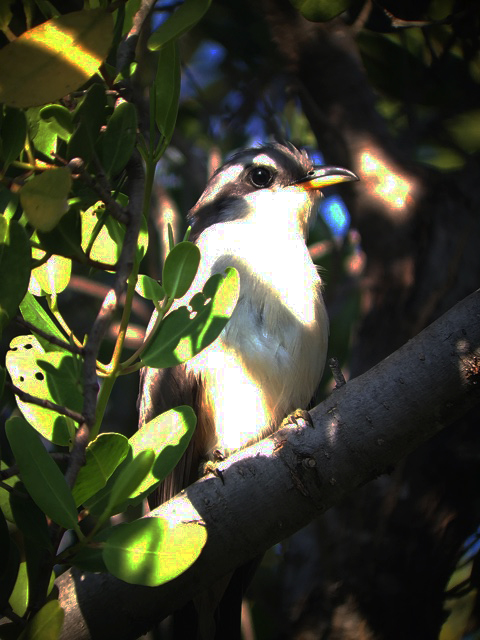
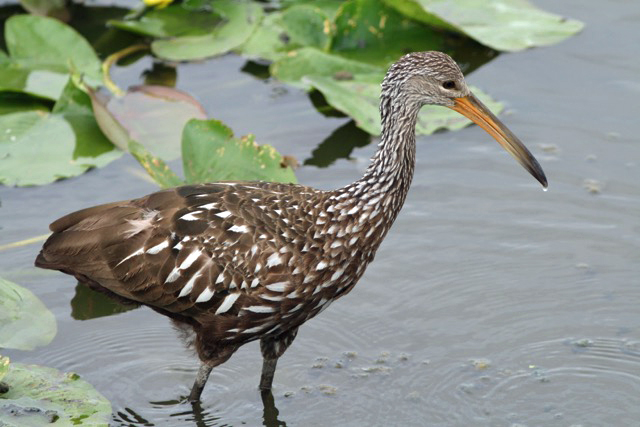
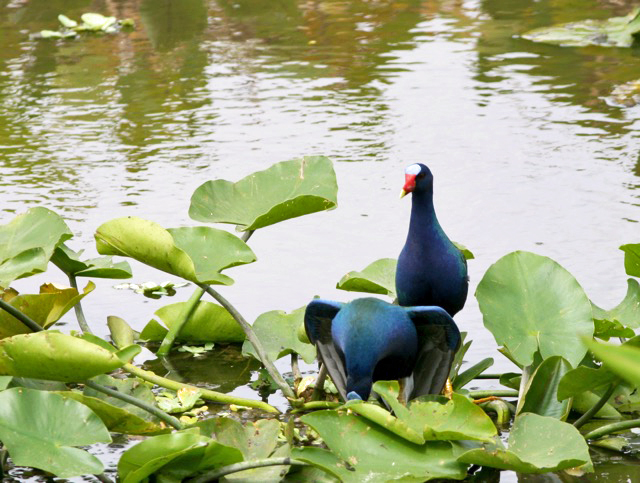
As always, Florida isn’t all about the birds, and this year we had excellent views of a beautiful Sherman Fox Squirrel and a host of reptiles, amphibians, butterflies and even fish!
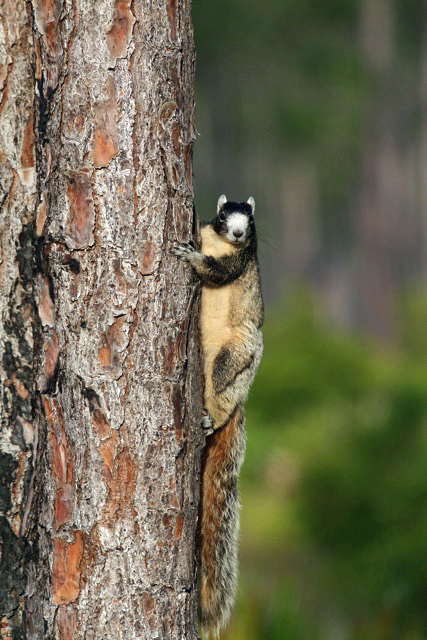
April 27:
Rich Hoyer on his recently completed tour, Costa Rica in Spring
Spring came early to Costa Rica, and we experienced (and enjoyed) slightly cooler weather caused by occasional showers and some overcast days. An explosion of breeding activity was a bonus result. Of the nearly 475 species of wonderful tropical birds, heard and seen, we observed nesting evidence for almost 40, such as a Dark Pewee form-fitting its mossy nest in the top of a tree below eye level, a pair of rare Black-and-white Becards carrying material to their basket ball-sized orb in a small tree, and an amazing interaction between two male Resplendent Quetzals while the female watched from a nearby perch near the nest. With such a magnificent species seen so well, it was no wonder it was voted as one of the favorite birds of the tour.
Song activity was high well into the mid-day hours, and after lunch one day we chanced upon a responsive Lesser Ground-Cuckoo that performed amazingly on a bush right next to our bus. An elusive and attractive species (multicolored orbital skin reminding one of Egyptian royalty), it also earned it top votes to tie with the quetzal. Other bird highlights included 23 Turquoise-browed Motmots on one single day, a incredibly timed flyover of two Great Green Macaws at La Selva Biological Station, a male Snowcap at a flower garden, a busy mob of three species of intensely colored honeycreepers at close range, a kettle of over 150 migrating Mississippi Kites, and so many others. Add to the birds some wonderful snakes, lizards, frogs, and toads; many botanical highlights including some lovely orchids; and endless invertebrates from butterflies and moths to beetles and damselflies, it was a most enriching two weeks in paradise.
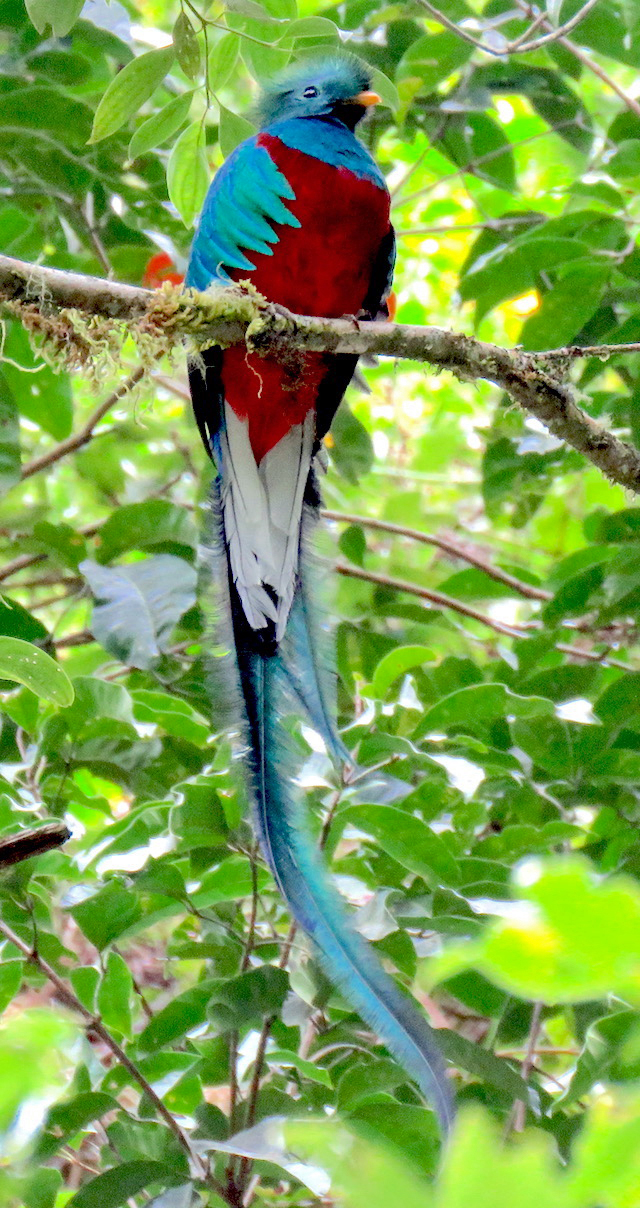
A male Resplendent Quetzal watches over the nest cavity, waiting to see what an intruding male might do.
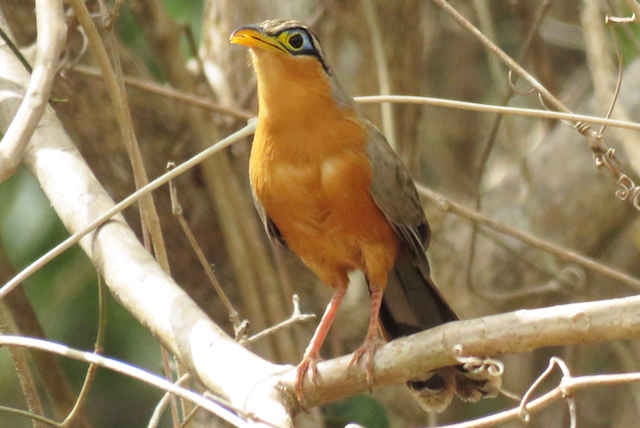
This Lesser Ground-Cuckoo sat up next to our bus and nearly fell of his perch as he belted out his song. The video can be seen here: https://youtu.be/o0Dby0L_oW0.
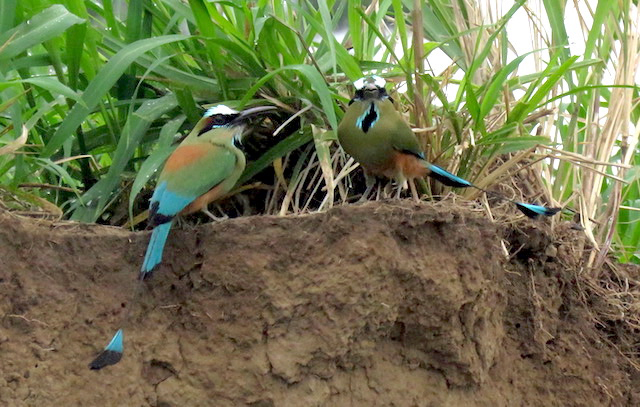
These Turquoise-browed Motmots were just the first two of 23 seen on one day.
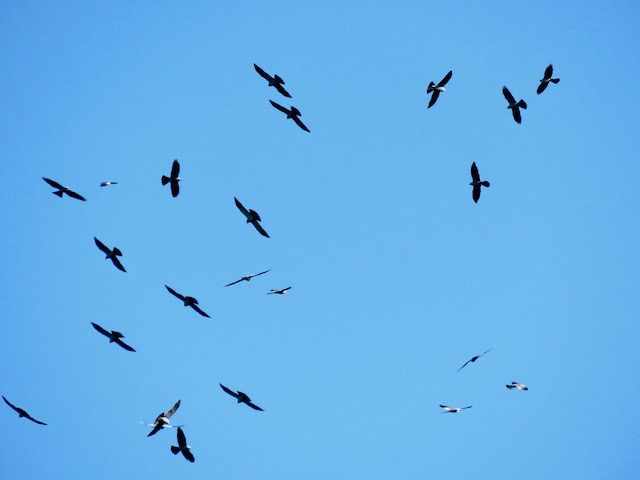
A total of 154 Mississippi Kites were counted in this exciting kettle of migrants.
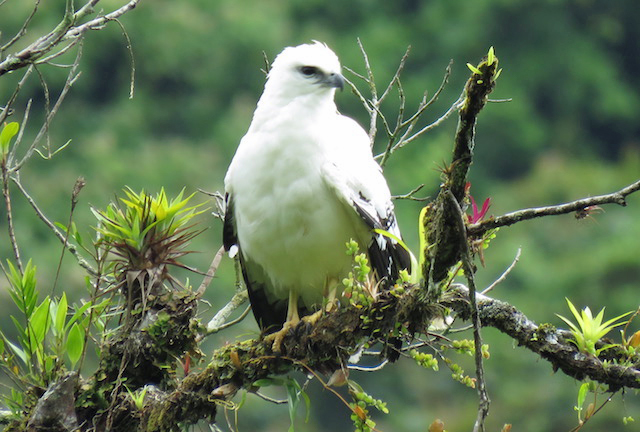
A White Hawk preening after a morning rain was a lucky find next to the road. A video of it can be seen here: https://youtu.be/ffW5golMbNc.
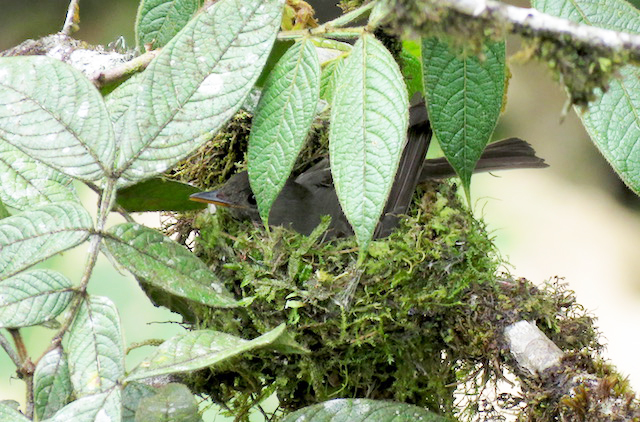
We sometimes miss Dark Pewee, but almost never do we get a chance to look so closely at a nest.
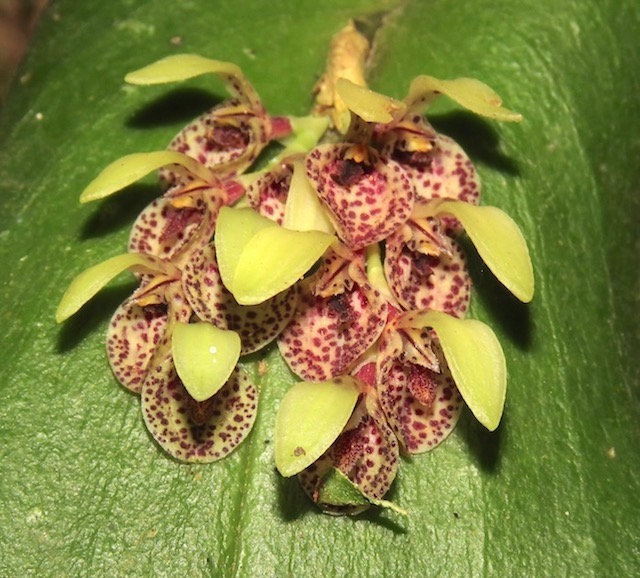
There weren’t many orchids in bloom, but this Acianthera cogniauxiana on our Monteverde hotel grounds was spectacular.
This rubyspot damselfly, Hetaerina majuscula, is probably the most attractive member of the genus.
This Whitened Bluewing, Myscelia cyaniris, was basking next to the trail on our last day.
The silk moth Rothschildia orizaba never fails to take the show when one is spotted, this one by a sharp-eyed participant just after we had seen a Spotted Woodcreeper.
April 20:
Gavin Bieber on his just-completed tour, Texas: The Upper Coast
Our tour took place over a week where the weather didn't create conditions for a fallout of migrant songbirds along the coast, but the saving grace of the upper Texas coast and environs in spring is that, weather aside, the place is heaving with birdlife and we spent a very enjoyable week exploring the expansive marshes, white sand beaches, coastal woodlots and inland pine and hardwood forests that typify far east Texas.
The rookery at High Island gave us excellent views of Roseate Spoonbill and patient American Alligators.
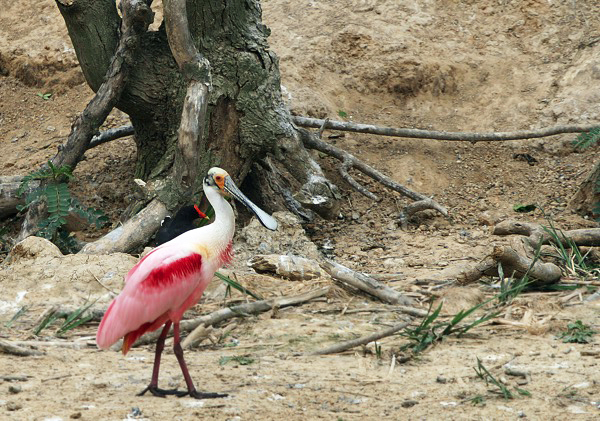
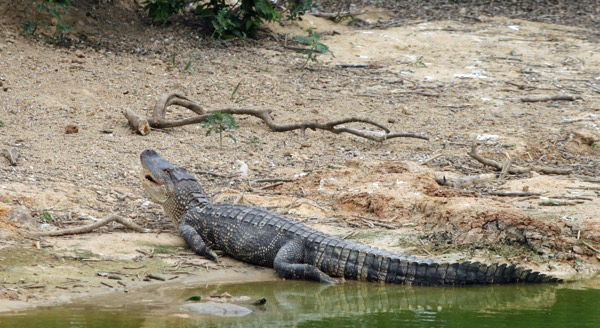
The marshes of Louisiana held King Rails with fuzzy black chicks in tow and handsome roadside Scissor-tailed Flycatchers.
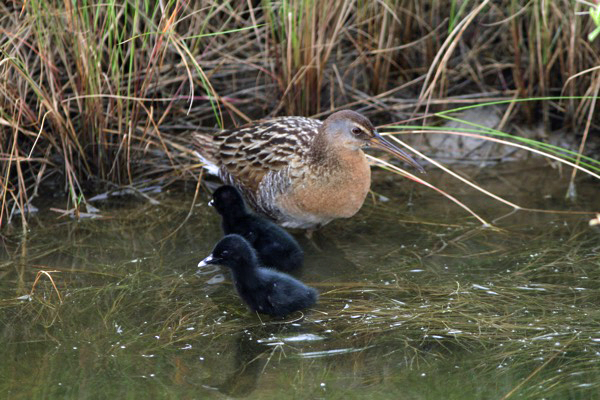
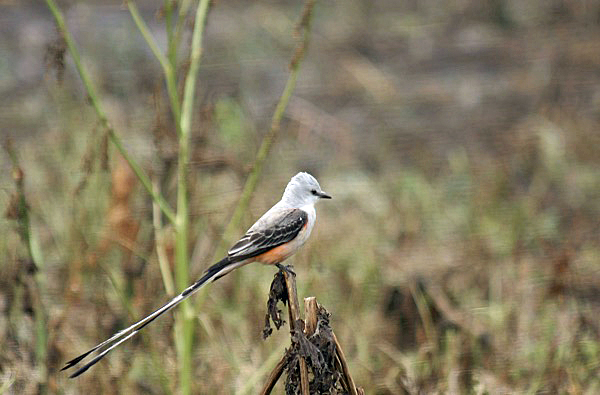
A trip north to the hardwood and pine forests near Jasper yielded the hoped for Red-cockaded Woodpecker and several warblers on their breeding grounds such as this Hooded.
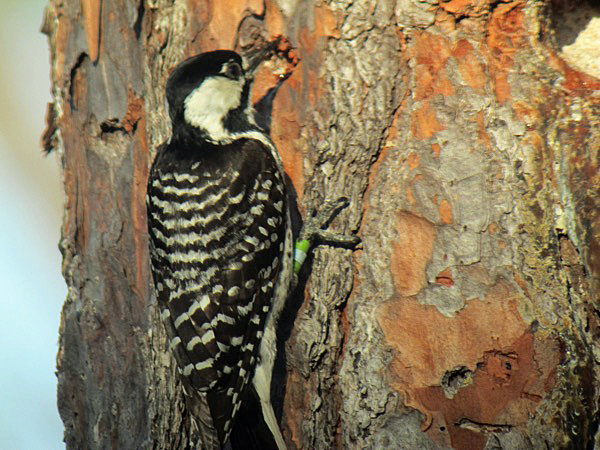
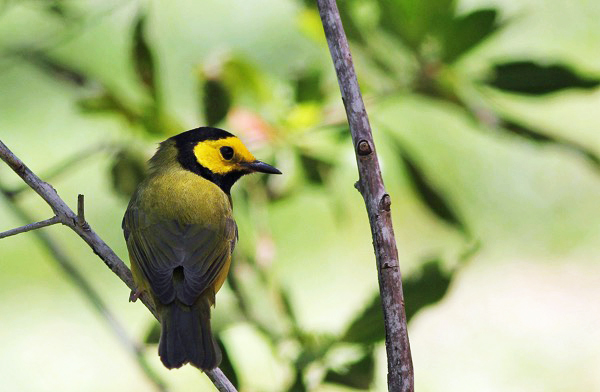
The various coastal woodland preserves also held treasures, such as Ovenbirds walking on the open understory of the woods and a stunning Cerulean Warbler on the last afternoon.
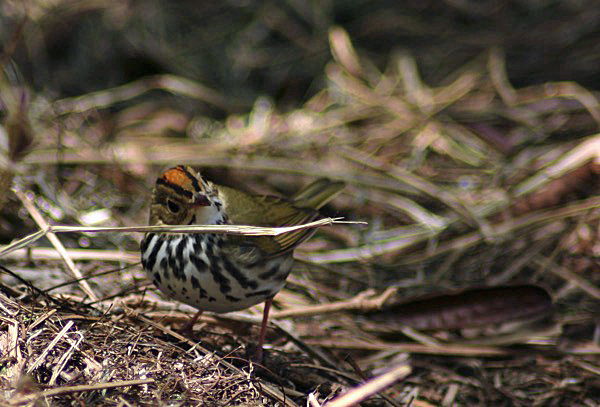
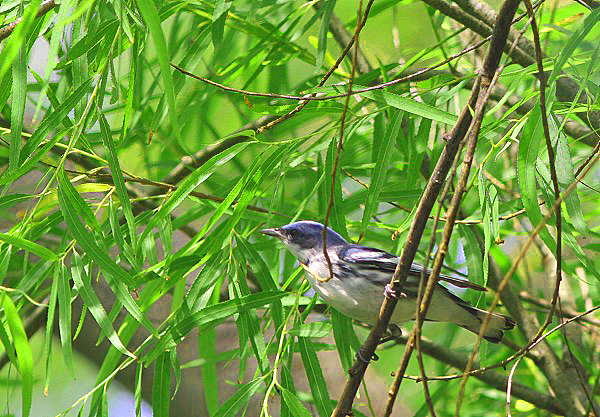
We spent quite some time working on the identification of shorebirds and waders, encountering an impressive 33 species of shorebirds, all 12 possible U.S. herons and nine species of terns; often sitting together for close studies. It had been several years since I had visited this bird-rich area and I’m thankful for the chance to revisit one of the United States’ premier destinations, and happy to have shared the joys of migration birding with such a fine group.
March 23:
Fabrice Schmitt on his and Steve Howell's recently completed cruise, Buenos Aires to Santiago
For the second time this year, we had an amazing cruise from Buenos Aires (Argentina) to San Antonio (Chile)!
According to the group, some of the most memorable birds seen during our landings were the stunning Magellanic Woodpecker seen in Ushuaia, the unique Magellanic Plover in the Patagonian steppe near Punta Arenas, and the American Painted Snipe that surprised us all near Montevideo!
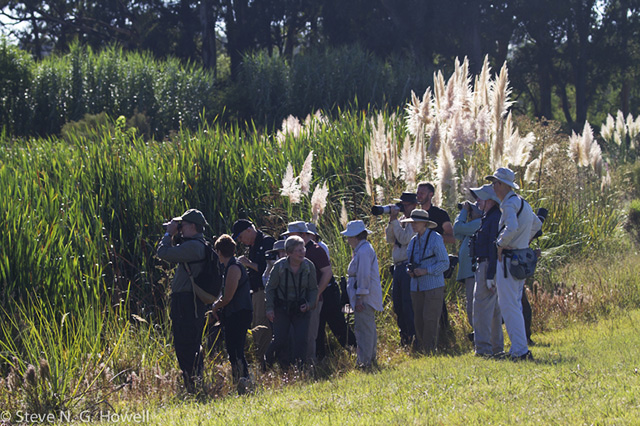
Our shipmates on dry land in Montevideo
Magellanic Woodpecker
Magellanic Plover
South American Painted Snipe
Obviously, the visit to the King Penguin colony on the Falklands Islands was also a wonderful moment, as was sailing near the Horn with 70 knots of wind!
King Penguins and hatchlings
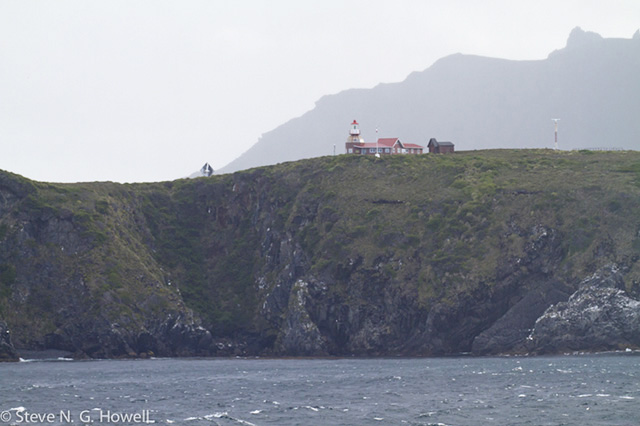
Cape Horn
Black-browed Albatross in a whole gale...and then some
During our seabirding days, we found no fewer than 34 species of tubenoses, and even added the rare Sooty Albatross to our already long list of 13 species of albatrosses.
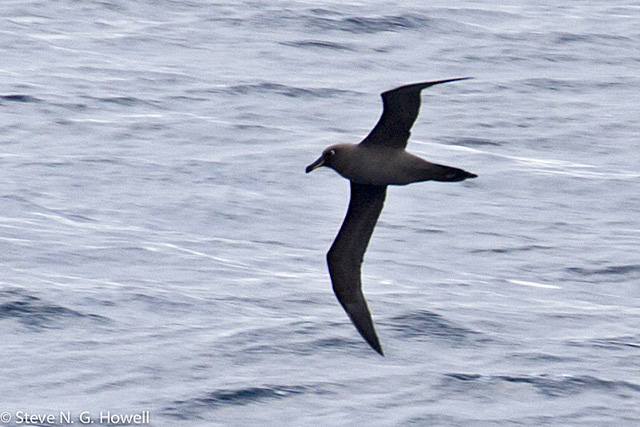
A Sooty Albatross, new for even Fabrice
Southern Royal Albatross
Yellow-nosed Albatross
Beside amazing birding and wonderful scenery, we had as always fantastic encounters with several species of whales and dolphins.
Fin-backed Whale
Common Dolphin
It really was a wonderful cruise, offering a marvelous combination of comfort and superb seabirding.
March 19:
Jon Feenstra on his recently completed tour, Ecuador: The Amazon Lowlands
We’re all back from a week in the Ecuadorian Amazon based at the remote, but comfortable, indigenous people-run Sani Lodge. We had a great time with bird highlights ranging from colorful Wire-tailed Manakins, a few cryptic antbirds, bizarre Hoatzins, four species of macaw, and lots of interesting insects, monkeys, and just fascinating jungle scenery. The time we spent in the rainforest was nearly eight days, and with no rain, it was easy to explore the surrounding jungle on foot and by canoe.
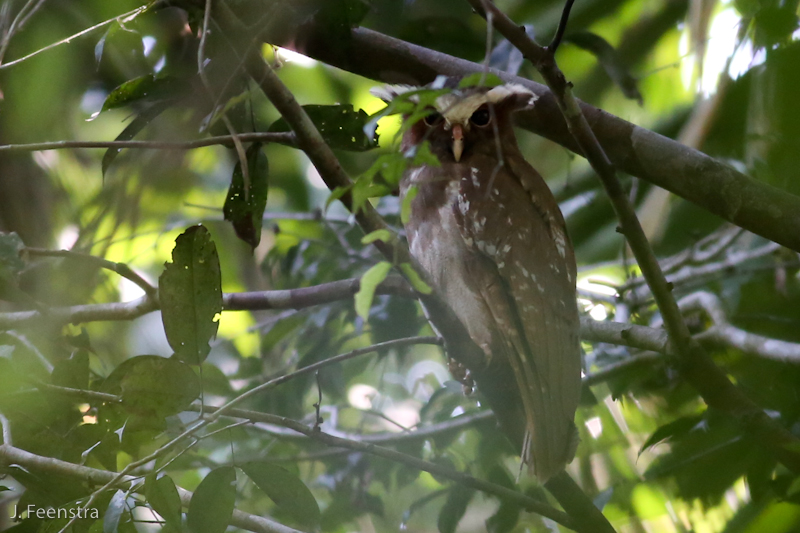
A Crested Owl was a day-roost stakeout at a house near the indigenous peoples’ village.
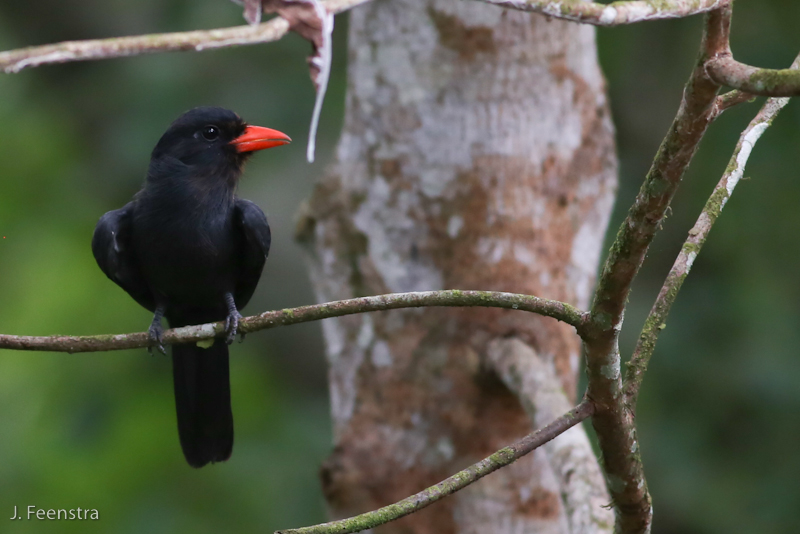
The lodge itself always had birds about. A few Black-fronted Nunbirds were noisy members of the “bar flock”.
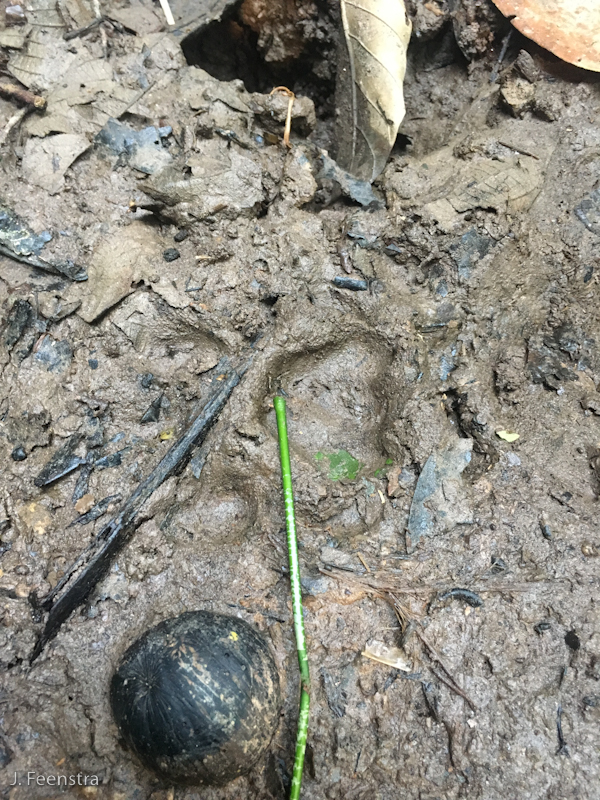
This was as close we came to seeing a Jaguar, but one was out there… maybe seeing us.
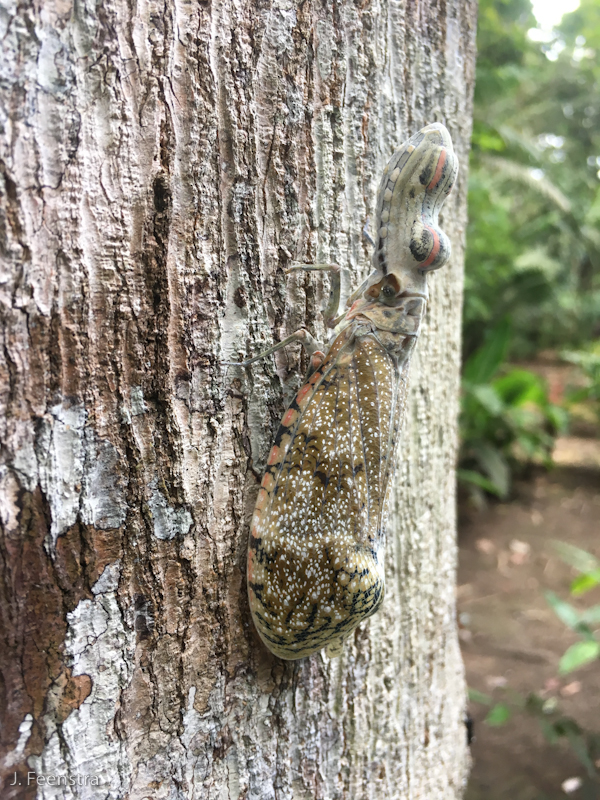
This peanut-headed bug (real name) was yet another example of the astounding, and often strange, diversity of the Amazon.
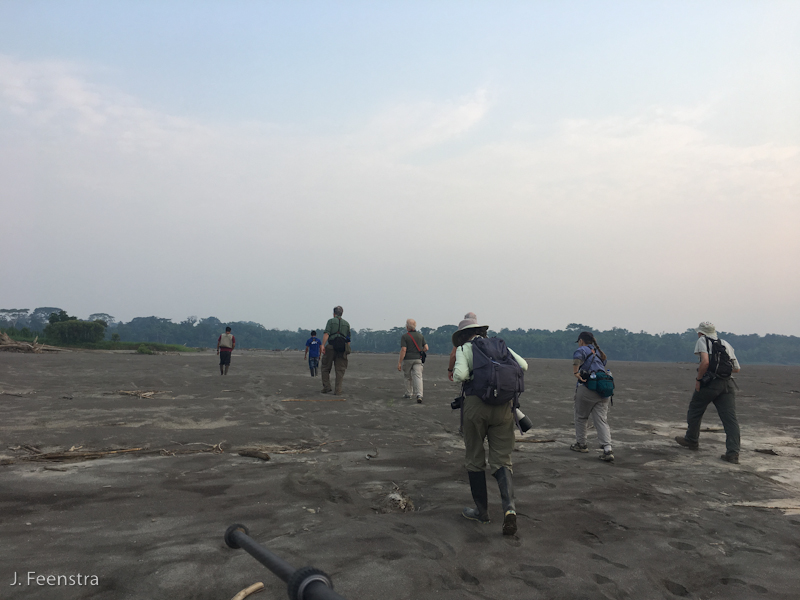
Though most of our birding was in the forest, we made a beach landing on a river island to get those island specialties like Oriole Blackbird and Olive-spotted Hummingbird.
March 16:
Rich Hoyer on his just-completed tour, Jamaica
We breezed through the natural history of Jamaica this past week, seeing all endemic bird species along with many other fascinating life forms (many of them endemic too) that conspire with the unique sounds and smells, as well as the very friendly local people and delicious food, to give this island such a memorable and lovely character. We got to know a large part of the island with our scenic drives on back roads, starting on the north coast, then reaching the eastern end, over the mountains, to the southern tip, and finally a trip through the middle of the island after a most delightful stay at Marshall’s Pen.
We started the tour with a stay at a hotel with a stunning view of the Caribbean Sea below.
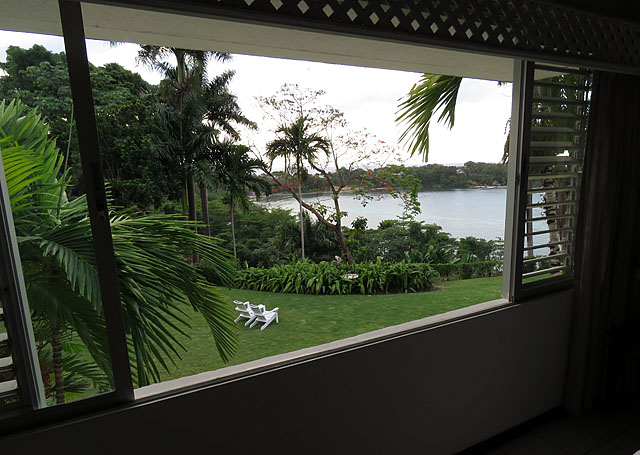
Every day had wonderful highlights, from an almost instantaneous Jamaican Owl to super confiding Jamaican Todies, amazingly close White-tailed Tropicbirds and a last-second Rufous-throated Solitaire. But one day in particular was amazing from beginning to end. We had a full morning at Marshall’s Pen, during which we watched Red-billed Streamertails fighting over the nectar-dripping flowers of the Euphorbia punicea, in peak bloom during our visit.
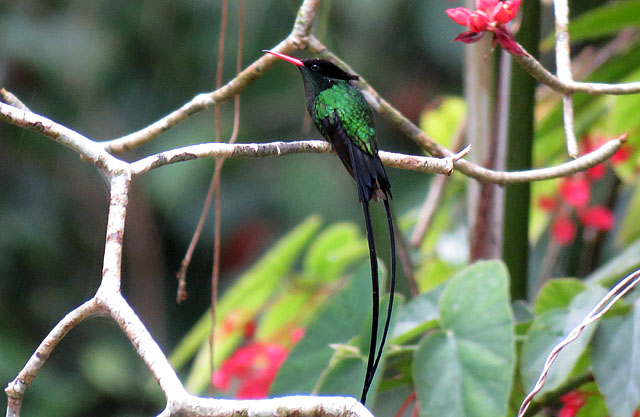
Just below the hummers was a pair of adorable Jamaican Todies, voted one of the top birds of the tour.
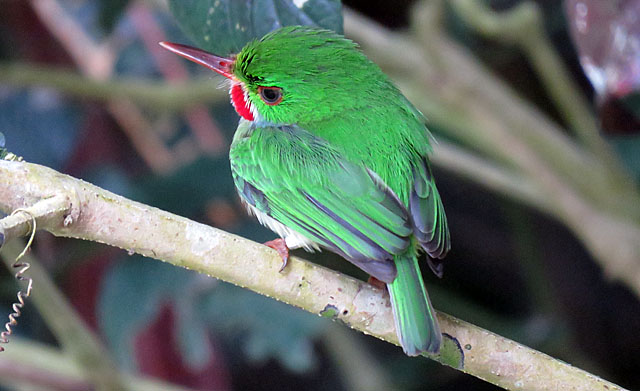
Across from them was a feeder with the orange halves impaled, visited by a pair of Jamaican Woodpeckers.
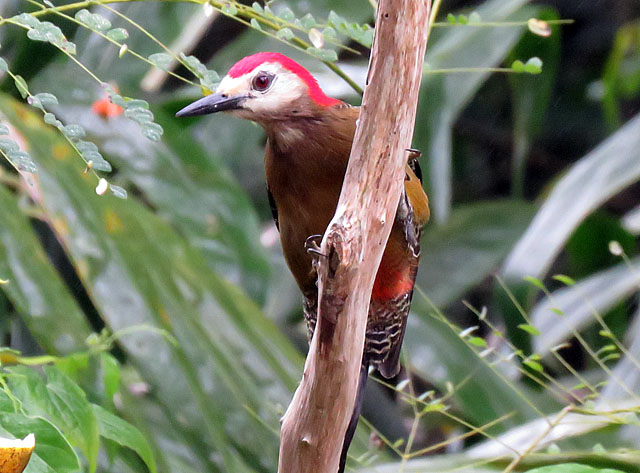
Once the woodpeckers left, an Orangequit, an endemic genus and one of the most distinctive birds in Jamaica, came down and took his fill.
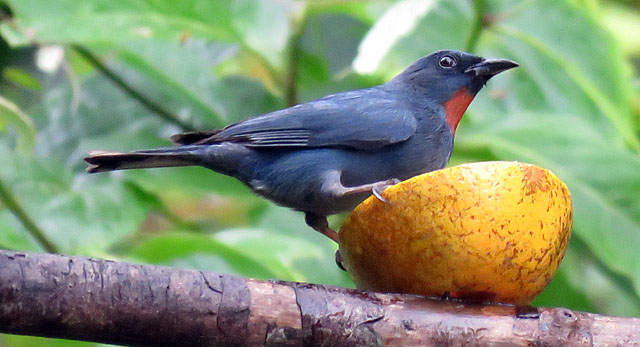
We then took an afternoon drive to the Black River Upper Morass, where low levels of water and overgrown marshes were not promising for big numbers of birds, but we lucked into quality. After seeing Limpkin, Least Bittern, and Purple Gallinule, timing was just right for a response from a Spotted Rail that walked out into the open. We ended up seeing three birds from this location!
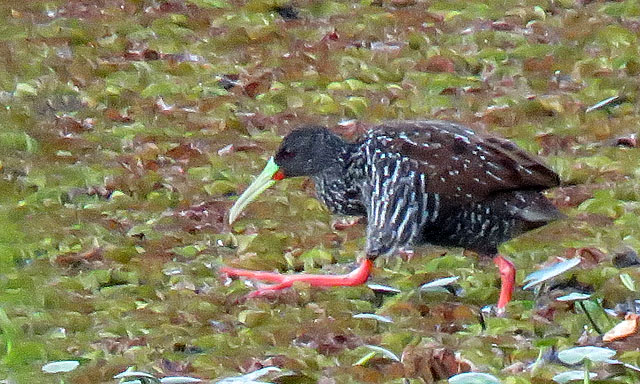
Then just down the road was a slightly different patch of vegetation, and a quick attempt for Yellow-breasted Crake resulted in a vocal response. Before long we were watching two of them walking through the sedges, eventfully to emerge out in the open and walk several yards across totally open marsh to perch on a small log.
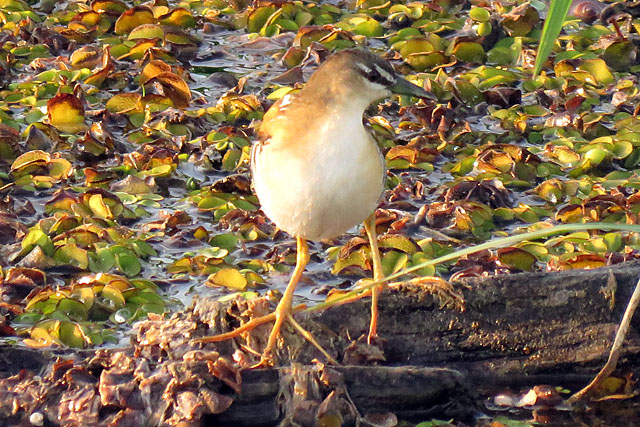
If that weren’t enough, after dinner back at Marshall’s Pen we got views of a Northern Potoo flying over us twice, finally seeing a second one perched through many branches. But then just a few feet away we noticed a Jamaican Owl hunting silently from a fence post, completely unperturbed by our close presence.
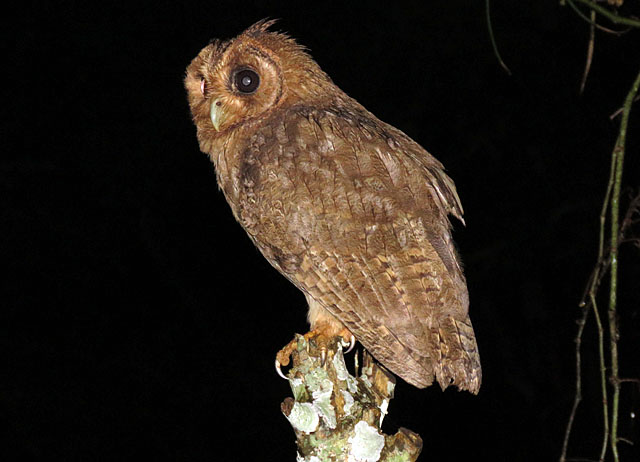
If the birds weren’t enough, we had beetles, millipedes, snails, lizards, and butterflies to look at. One evening in the mountains the moths were particularly good, one of the prizes being the endemic and seldom witnessed Jamaican Furry-legs, Acraga ciliata.
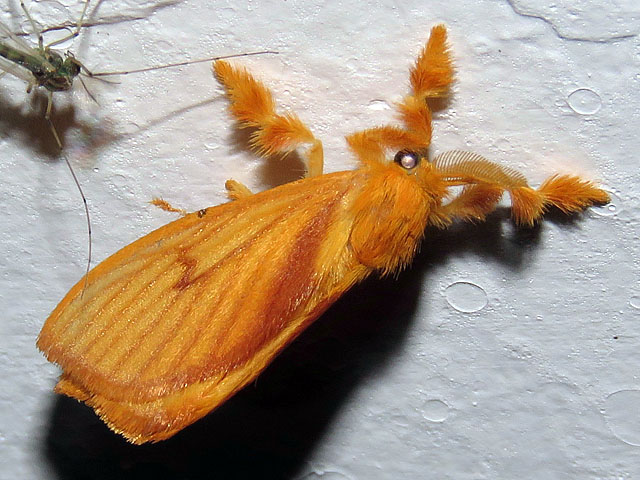
We birded our final day of the tour in the Cockpit Country, seeing our last endemic species in the form of a perched Yellow-billed Parrot. We also heard Plain Pigeon (and two that flew over in a split second were likely also this endemic subspecies), and then the aforementioned Rufous-throated Solitaire completed the entire list of endemic species and subspecies currently known to occur on the island, one of the few times we’ve done that. So we walked on slowly, saw some nice butterflies, and took time to enjoy the flowers and other endemic plants, such as this Jamaican Schlegelia, Schlegelia parasitica, a little-known plant of the limestone hills.
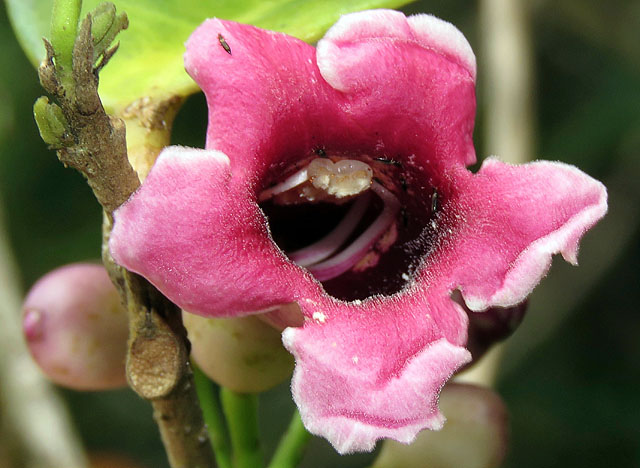
March 7:
Rich Hoyer on his just-completed tour, Mexico: Baja California's Cape Region
This year’s Baja California tour was highlighted by lots of birds everywhere and delightfully pleasant weather, providing a perfect escape from the wintry climate dominating our homes up north. Both hummingbird species received top votes for favorite bird, as we had exceptional views on our last morning of a male Costa’s with his shining lavender helmet, and the endemic and gorgeous Xantus’s, below, was particularly confiding this year in several locations.
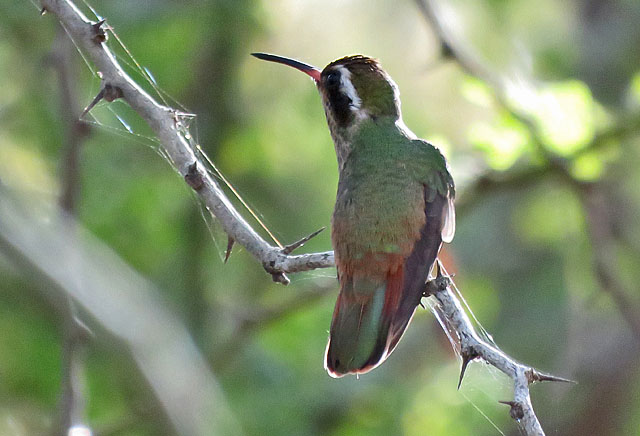
Belding’s Yellowthroat and Gray Thrasher were two more regional endemics getting high votes, the latter seen on multiple days and extraordinarily well. One morning, a pair fed on the shoulder of a back road through the desert while we watched from within the van just a few feet away.
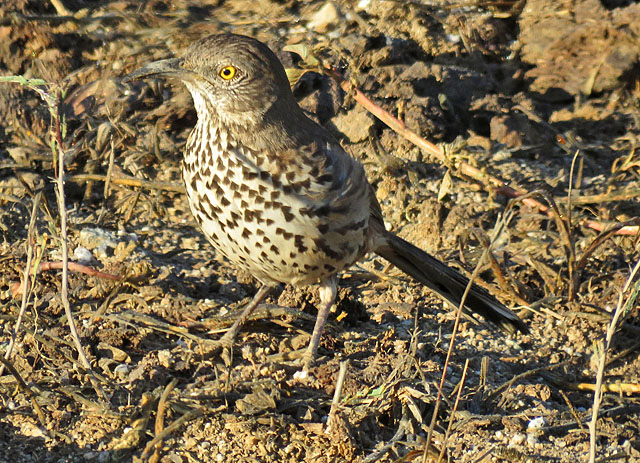
Our wonderful experience with a pair of “Mangrove” Yellow Warblers was hard to beat, and so even this more widespread species received a number of votes.
The relaxed pace of the tour allowed us to do a bit of exploring, birding a reservoir and a marsh that locals told us about, and stopping to admire the plant life, such as this Desert Unicorn Plant, Proboscidea althaeifolia.
We also saw some endemic reptiles, such as a water snake, a turtle, and two lizards, and turning a bit of trash in the desert near Puerto San Carlos revealed an endemic hairy scorpion, Hadrurus concolorous.
We spent a full morning hiking to higher elevations in search of the Sierra de la Laguna specialties, and seeing one and hearing three more “Cape” Northern Pygmy-Owls was a highlight.
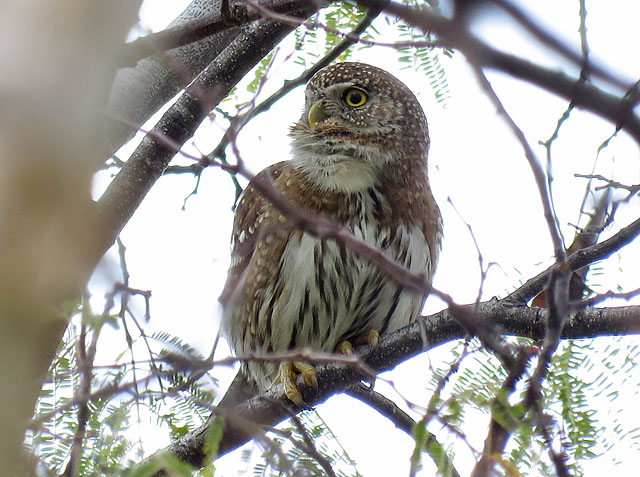
An unusually large concentration of over 20 Crested Caracaras along one highway demanded an impromptu stop for an irresistible photo op.
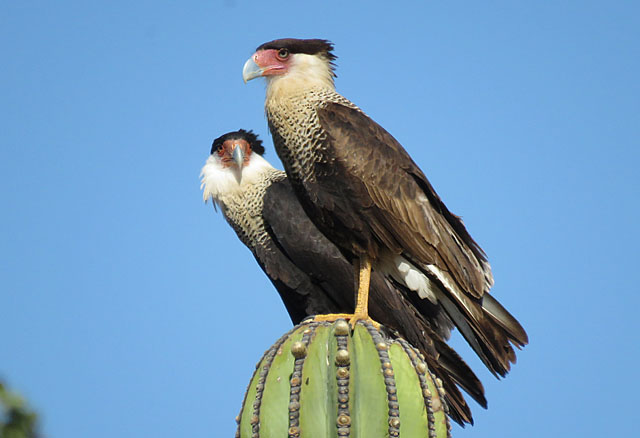
The boat trip on Magdalena Bay was more challenging than usual, thanks to a third consecutive day of unusually persistent north winds, but the numbers of birds and fabulous desert scenery made it worth while.
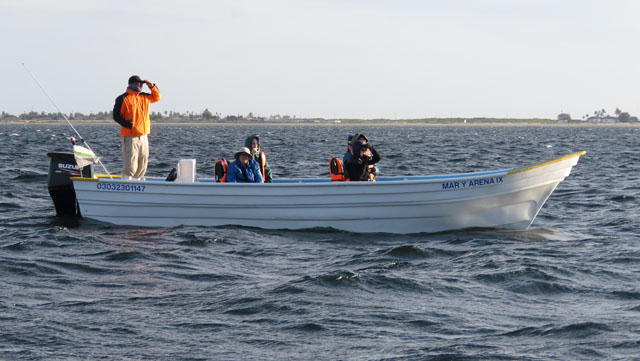
And of course we had enjoyable views of several Gray Whales – perhaps up to 20 around us over the course of an hour, with one spy-hopping at very close range and another doing a double breach, allowing for a lucky photo.

